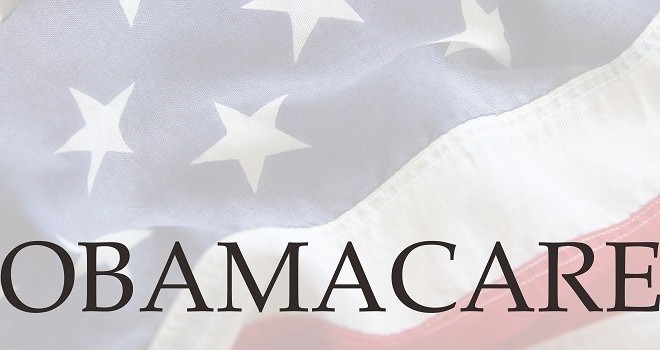Obamacare’s Effect on Those With Fewer Than 25 Employees
Obamacare’s Effect on Those With Fewer Than 25 Employees
Key Provisions Under the Affordable Care Act
By Marc Pieroni
As a benefits consultant, I am often asked by my clients what type of impact the Affordable Care Act (ACA) will have on small businesses. Implementation of the Affordable Care Act occurs in stages, with many of the reforms and requirements taking effect in 2014.
Some of the provisions that may impact employers with fewer than 25 employees include:
Small Business Health Care Tax Credits
The small business Health Care Tax Credit helps small employers afford the cost of health care coverage for their employees and is specifically targeted for those employers with low- and moderate-income workers. The credit is designed to encourage small employers to offer health insurance coverage for the first time or maintain coverage they already have. Since 2010, businesses that have fewer than 25 full-time equivalent employees (FTEs), pay average annual wages below $50,000, and contribute 50% or more toward employees’ self-only health insurance premiums may qualify for a small business tax credit of up to 35% to help offset the costs of insurance. In 2014, this tax credit goes up to 50% and is available to qualified small employers that participate in the Small Business Health Options Program (SHOP). Eligible small employers can claim the current credit through 2013, and the enhanced credit can be claimed for any two consecutive taxable years beginning in 2014.
Employer Notice To Employees of the New Health Insurance Marketplace
Under the Affordable Care Act, employers covered by the Fair Labor Standards Act (generally, those firms that have at least one employee and at least $500,000 in annual dollar volume of business) must provide notification to their employees about the new Health Insurance Marketplace, inform employees that they may be eligible for a premium tax credit if they purchase coverage through the Marketplace, and advise employees that if they purchase a plan through the Marketplace, they may lose the employer contribution (if any) to any health benefits plan offered by the employer. Employers are required to have provided this notice to all current employees by October 1, 2013, and to each new employee at the time of hire beginning October 1, 2013, regardless of plan enrollment status (if applicable) or of part-time or full-time status. The Department of Labor has provided employers with two sample notices they may use to comply with this rule.
Summary of Benefits and Coverage (SBCs) Disclosure Rules
Employers are required to provide employees with a standard “Summary of Benefits and Coverage” form explaining what their plan covers and what it costs. The purpose of the SBC form is to help employees better understand and evaluate their health insurance options. Penalties may be imposed for non-compliance.
Medical Loss Ratio Rebates
Under the ACA, insurance companies must spend at least 80% of premium dollars on medical care rather than administrative costs. Insurers who do not meet this ratio are required to provide rebates to their policyholders, which are typically employers who provide group health plans. Employers who receive these premium rebates must determine whether the rebates constitute plan assets. If treated as a plan asset, employers have discretion to determine a reasonable and fair allocation of the rebate.
Limits on Flexible Spending Account Contributions
For plan years beginning on or after January 2013, the maximum amount an employee may elect to contribute to health care flexible spending arrangements (FSAs) for any year will be capped at $2500, subject to cost-of-living adjustments. Note that the limit only applies to elective employee contributions and does not extend to employer contributions.
Additional Medicare Withholding on Wages
Beginning January 1, 2013, ACA increases the employee portion of the Medicare Part A Hospital Insurance withholdings by .9% (from 1.45% to 2.35%) on employees with incomes of over $200,000 for single filers and $250,000 for married joint filers. It is the employer’s obligation to withhold this additional tax, which applies only to wages in excess of these thresholds. The employer portion of the tax will remain unchanged at 1.45%.
New Medicare Assessment on Net Investment Income
Beginning January 1, 2013, a 3.8% tax will be assessed on net investment income, such as taxable capital gains, dividends, rents, royalties, and interest for taxpayers with modified adjusted gross income more than $200,000 for single filers and $250,000 for married joint filers. Common types of income that are not investment income are wages, unemployment compensation, operating income from a non-passive business, Social Security benefits, alimony, tax-exempt interest, and self-employment income.
Health Insurance Coverage Reporting Requirements
Beginning in 2015, the Affordable Care Act provides for new information reporting by employers that sponsor self-insured plans (Section 6055 rules). Self-funded employers, issuers, and other parties that provide health coverage must submit these new reports to the IRS, detailing information for each covered individual. The first of these reports must be filed in 2016.
Marc Pieroni is the Managing Partner of BenefitCorp, a commercial insurance consulting agency founded in 1995. Marc is dedicated to helping businesses implement, administer and communicate all lines of insurance and financial products. Please call Marc at 972-480-0109 www.benefitcorp.com
The Punch List is Triune’s proprietary blog for discussing issues and providing insights specific to the commercial construction industry. Copyright 2013 TMV, LLC (Triune). Any and all rights reserved.
Vince – the blogger’s Reality Bite: Just about our entire existence Triune has offered affordable healthcare to its employees for three reasons.
1. It helps to recruit and retain the best and brightest in our industry.
2. Preventative healthcare is less expensive than catastrophic healthcare.
3. It is simply the right thing to do.

